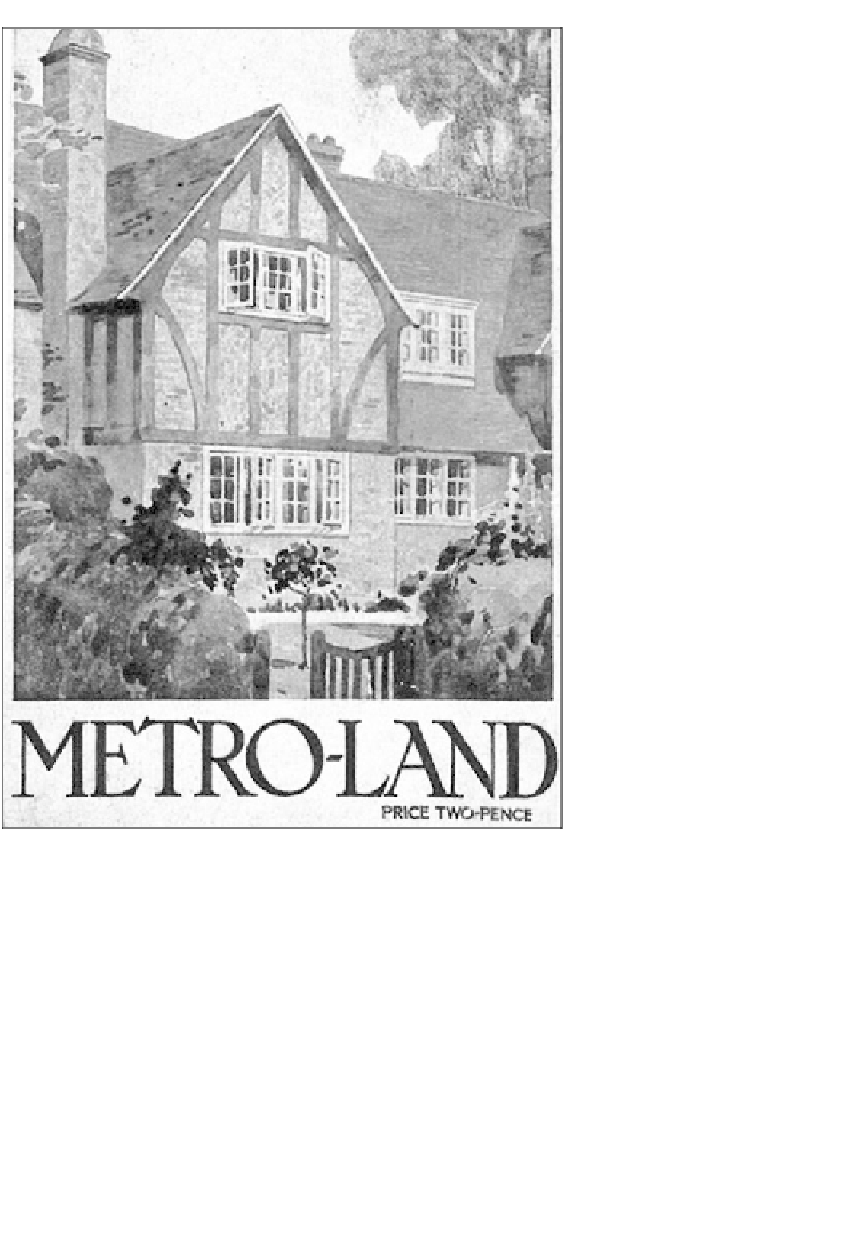Environmental Engineering Reference
In-Depth Information
Figure 3.7
1930s
Metro-Land
magazine
Source
: The Advertising Archives.
This led to major urban redevelopment and the expansion of London from a pre-1850s urban
area of around 20 km
2
(the 'walking city' of London, stretching west-east from Green Park
to Bethnal Green, and north-south from Holloway to Elephant and Castle) (Ackroyd, 2003),
to the present day Greater London area of 1,700 km
2
(effectively the 'railway city' and 'motor
car city') (Newman and Kenworthy, 1999).The urban area that was built initially around the
marketing of the day was often based around the attractions of 'escaping' from the city by
means of the Underground.
London has since developed an extensive public transport network, including national rail,
the Underground, Docklands Light Railway, Overground (an orbital service) and bus network.
The focus for much of the network is for radial trips into the central area; however, there are
some orbital, tangential and cross-city routes.The number of trips in London is 24.8 million

